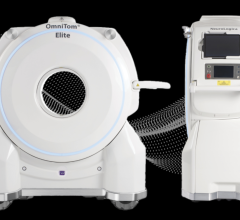
January 28, 2009 - Scientists at the Albert Einstein College of Medicine of Yeshiva University say that remarkable new tools, which spotlight individual cellular molecules, are helping advance biomedical research.
They have revealed that these new tools are photoactivatable fluorescent proteins (PAFPs) and other advanced fluorescent proteins (FPs).
Dr. Vladislav Verkhusha, associate professor of anatomy and structural biology at Einstein, says that PAFPs and FPs help noninvasively visualize the structures and processes in living cells at the molecular level.
The researcher says that it is now possible to follow cancer cells as they seek out blood vessels and spread throughout the body or to watch how cells manage intracellular debris, preventing premature aging.
The significance of this study lies in the fact that the new fluorescent proteins add considerably to the biomedical imaging revolution started by the 1992 discovery that the gene for a green fluorescent protein (GFP) found in a jellyfish could be fused to any gene in a living cell.
When the target gene is expressed, GFP lights up (fluoresces), creating a visual marker of gene expression and protein localization, via light (optical) microscopy.
While earlier technique could capture images only in non-living cells, the addition of PAFPs, more versatile versions of FPs, made it possible to do real-time SR fluorescence microscopy in living cells.
Dr. Verkhusha is said to have developed a variety of PAFPs and FPs for use in imaging mammalian cells, expanding the applications of fluorescence microscopy.
The collection includes PAFPs that can be turned on and off with a pulse of light, FPs that can fluoresce in different colors, and FPs that have better resolution for deep-tissue imaging.
The researcher most recently developed a red PAFP called PAmCherry1, which has faster photoactivation, improved contrast, and better stability compared to other PAFPs of its type.
"PAmCherry1 will allow improvements in several imaging techniques, notably two-color SR fluorescence microscopy, in which two different molecules or two biological processes can be viewed simultaneously in a single cell," Nature Methods quoted the researcher as saying in its online version.
Dr. Verkhusha's PAFPs have been used in several studies, providing new insights into a variety of biological processes.
In one of the studies, his PAFPs were used to capture the first nanoscale images of the orientation of molecules within biological structures.
"Such images could be useful in studying protein-protein interactions, the growth and collapse of intracellular structures, and many other biological questions," says Dr. Verkhusha.
In another study, Dr. Verkhusha contributed a novel PAFP to a new method of viewing individual breast cancer cells for several days at a time, providing new details on how cancer cells invade surrounding tissue and reach blood vessels, a process called metastasis.
"Mapping the fate of tumor cells in different regions of a tumor was not possible before the development of the photoswitching technology," explained John Condeelis, Ph.D., co-chair and professor of anatomy and structural biology and co-director of the Gruss Lipper Biophotonics Center.
Dr. Verkhusha has also developed new types of fluorescent proteins for use in conventional fluorescent microscopy, called fluorescent timers (FTs), which can change their color from blue to red over a matter of hours.
"These FTs will enable scientists to study the trafficking of cellular proteins and to provide accurate insight into the timing of intracellular processes, such as activation or inhibition of gene expression or protein synthesis," he says.
With the use of the FTs, he and his colleagues have shown for the first time how a protein called LAMP-2A, which scavenges cellular debris, is transported to intracellular organelles called lysosomes, where the debris is digested.
The researchers are of the opinion that understanding this process, which maintains the health of cells and organs, may lead to treatments to keep elderly people's organs in prime condition. (ANI)
Source: Yahoo at www.in.news.yahoo.com
For more information: www.aecom.yu.edu


 July 30, 2024
July 30, 2024 








